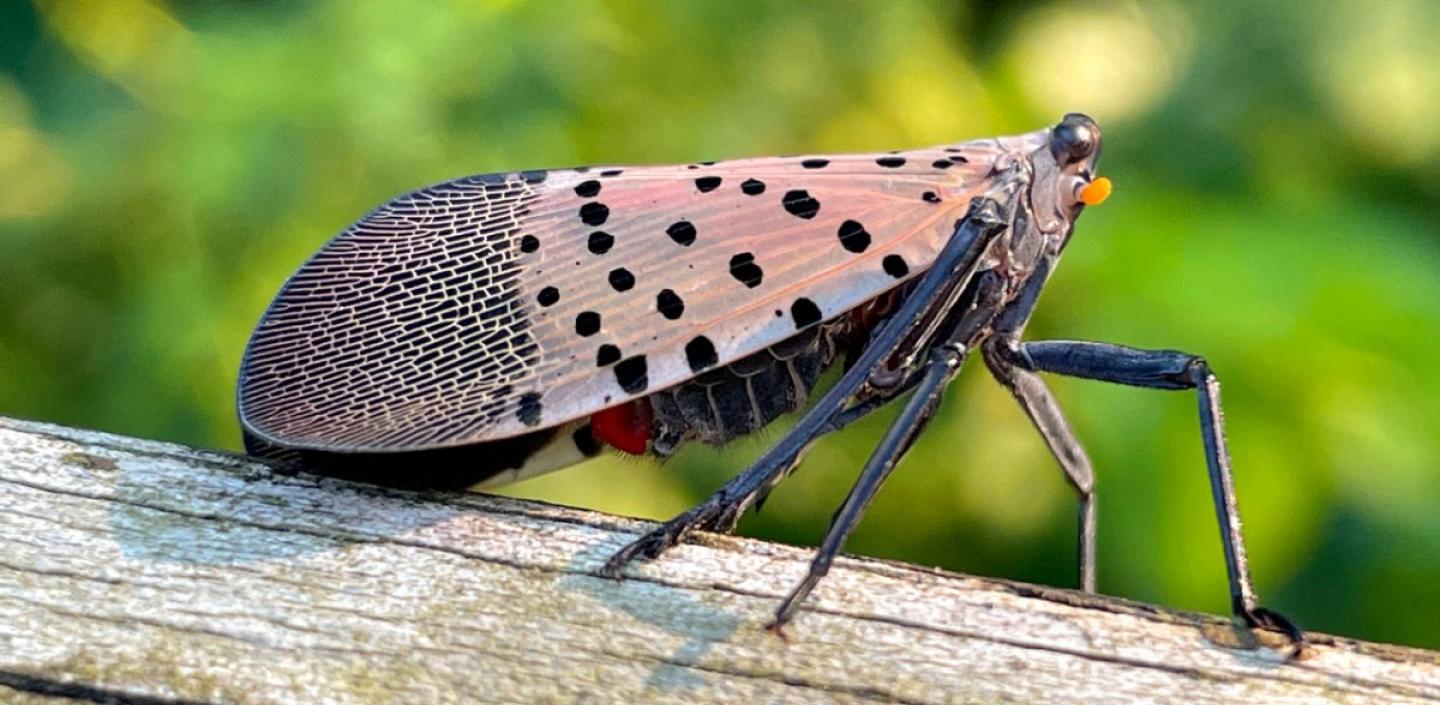Spotted lanternfly identified in Illinois; Nuisance pest doesn’t present human or animal health concerns

SPRINGFIELD, Ill. — The Illinois Department of Agriculture has confirmed the first detection of spotted lanternfly (Lycorma deliculata) in Illinois.
Following a report of a live adult on Sept. 16, state, federal and local officials coordinated a site visit near the area of the report and identified a moderately populated area of spotted lanternfly (SLF) on Sept. 18. Specimens were collected and submitted for identification, and confirmatory results were received on Sept. 26. The spotted lanternfly does not present any human or animal health concerns.
In a press release, Scott Schirmer, Illinois Department of Agriculture’s Nursery and Northern Field Office Section Manager, said, “If there is a silver lining associated with spotted lantern fly in Illinois, it is that we have no reason to believe that widespread plant or tree death will result from its presence. This is likely going to be a nuisance pest that interferes with our ability to enjoy outdoor spaces and may have some impact on the agritourism industry, including orchards, pumpkin patches, and vineyards.”
“Spotted lanternfly has been inching closer to the Midwest and Illinois for close to a decade,” Illinois Department of Agriculture Director Jerry Costello II said. “We have had a multi-agency team working to prepare for this scenario, including efforts on readiness, informing and educating the industry and the public, as well as monitoring early detection.”
Spotted lanternfly is an invasive plant hopper native to eastern Asia. First found in the U.S. in southeastern Pennsylvania in 2014, SLF has continued to spread throughout the eastern U.S. and recently into the Midwest. Confirmed identifications of SLF have been recorded in Indiana, Michigan and Ohio, in addition to some eastern and southeastern states.
SLF feeds on a wide variety of plants, including a strong affinity to the invasive tree of heaven (TOH), grapes (both wild and cultivated) and maple trees. These plants should be targeted for any monitoring activities. When feeding, SLF produces honeydew, a sticky liquid that often coats or accumulates on the foliage and other parts of plants.
SLF is believed to move easily on wood surfaces and products, vehicles such as trains, outdoor articles, and more – making it a challenging pest to contain and anticipate. Prevention and early detection are vital to limiting its ability to move and intrude upon new areas. Persons are highly encouraged to report any believed sightings of SLF to lanternfly@illinois.edu. Photos are necessary to verify a report and to aid in identification.
“IDOA is working with federal and local partners in an effort to determine the full extent of the infestation,” said Michael Woods, Division Manager of Natural Resources. “Although we cannot determine with any degree of certainty how SLF has arrived here, efforts are being undertaken to better understand its movement and behavior.”
The research and regulatory communities are continuing to learn about SLF, its behaviors, potential impacts, and effective management strategies – despite ongoing endeavors to minimize its spread and the associated impact on industry and natural resources.
What can you do to help?
- Report sightings — If you see SLF or suspect it, report it to lanternfly@illinois.edu. A fact sheet, including photos, is available through the University of Illinois Extension.
- Remove and destroy pests — crush nymphs and adults, scrape egg masses into a container with hand sanitizer or rubbing alcohol to kill them. Remember to take photos first, and report this.
- Check your vehicles, boat, camper, outdoor articles, etc. — Before leaving an area, do a quick inspection for any life stages. Destroy any eggs or insects found.
- Keep your eyes open and spread the word (not the pest) — The public’s help is needed to look for and report this pest and to strengthen the outreach about it. It will likely impact everyone in Illinois one way or another, so the more awareness, the better.
For more information, visit the following link: Spotted Lanternfly (illinois.gov)
Miss Clipping Out Stories to Save for Later?
Click the Purchase Story button below to order a print of this story. We will print it for you on matte photo paper to keep forever.

